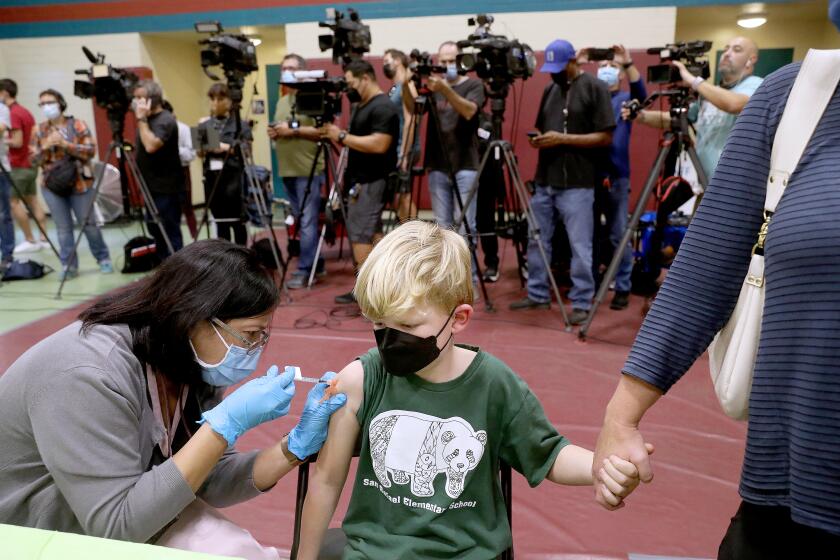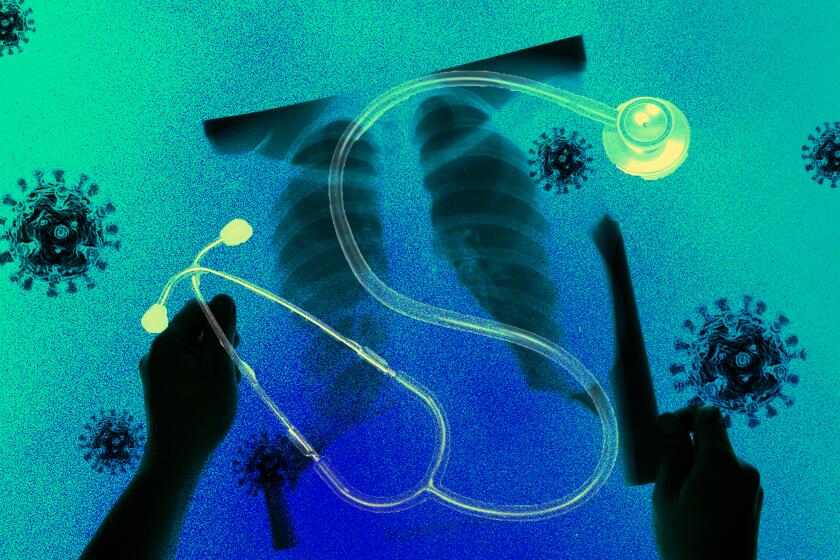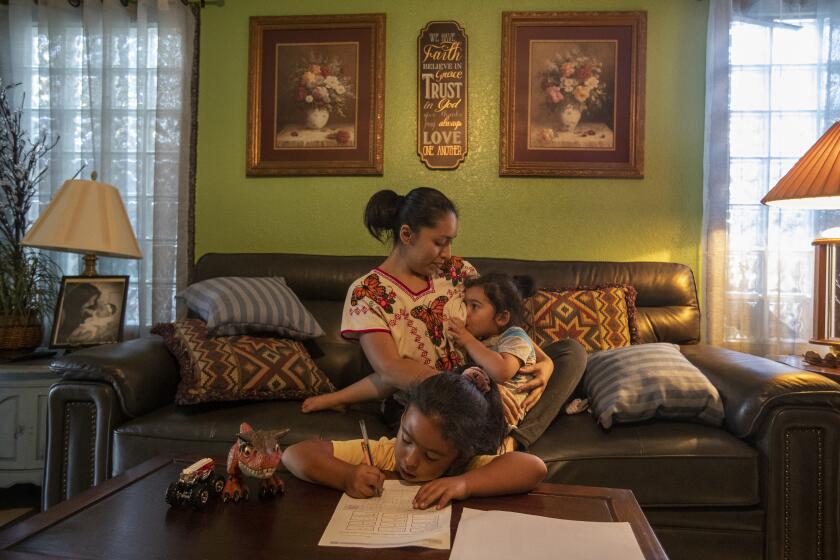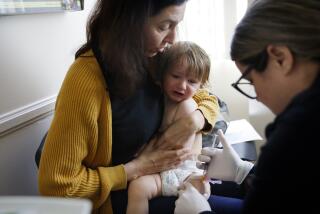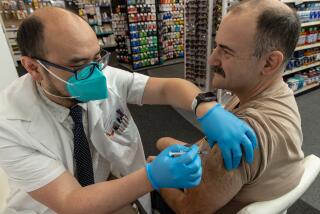‘Sobering’: L.A.’s Black, Latino kids under 5 are far behind on COVID-19 vaccinations
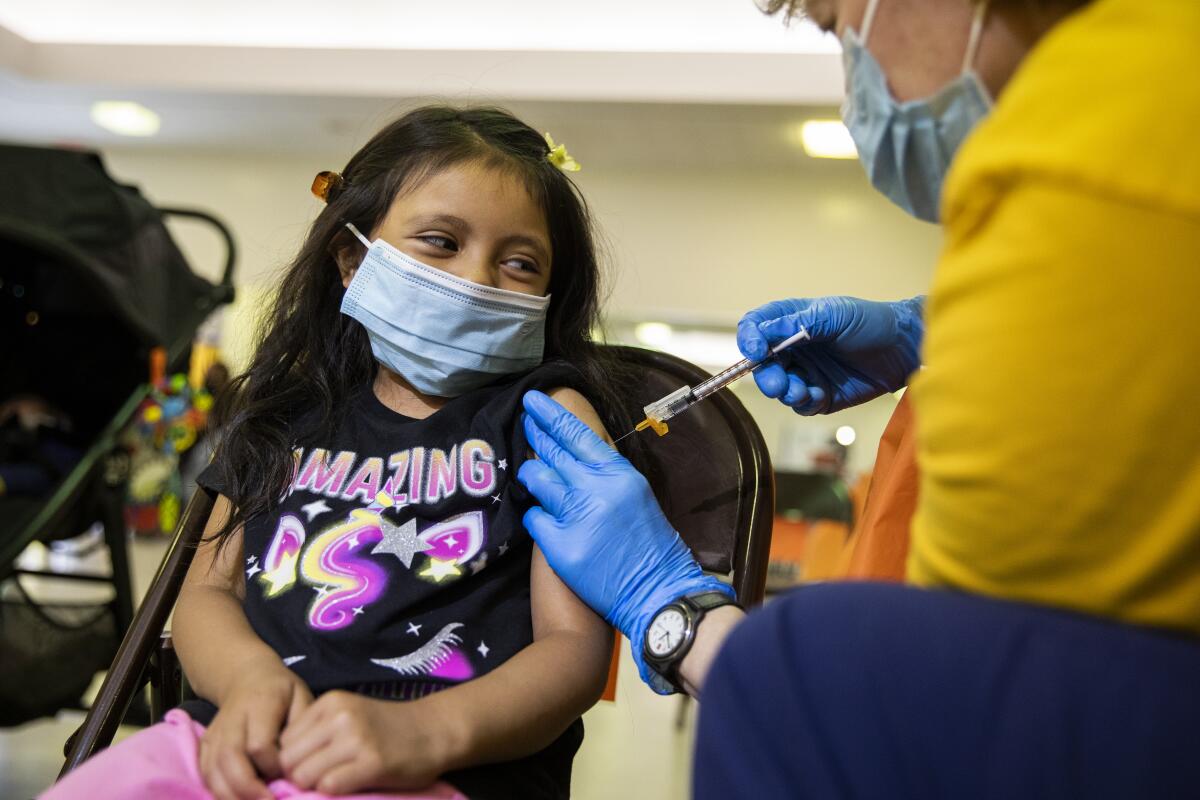
A new CDC report found that children under 5 are being vaccinated for COVID-19 at lower rates than older children.
Black and Latino children in Los Angeles County younger than 5 have COVID-19 vaccination rates in the single digits, reflecting a broad trend nationwide that has public health experts concerned and seeking ways to boost those figures.
Only 12% of children between 6 months and 4 years old have received at least one dose of a COVID-19 vaccine, and only 7% are fully vaccinated, according to L.A. County data.
Black and Latino children younger than 5 have the lowest rates, according to the county’s vaccine dashboard: Just 6% of Black children and 5% of Latino children have had at least one dose, compared with 22% of Asian children and nearly 19% of white children and nearly 15% of American Indian and Alaska Native children.
L.A. County Public Health Director Barbara Ferrer said the “sobering data” around young children’s vaccine rates shows “we have a lot of work to do.”
A U.S. Centers for Disease Control and Prevention report last week showed by the end of 2022, just 10% of kids between 6 months and 4 years old nationwide had received at least one COVID-19 vaccine dose, and only 5% were fully vaccinated.
Children younger than 5 overall are receiving COVID-19 vaccinations at a “substantially lower” rate than older children, raising concern among public health officials over the potential impact on future vaccination efforts. The report found that two months after vaccine was approved for older children, 24% of 5- to 11-year-olds and 33.3% of 12- to 15-year-olds had been vaccinated.
The low rates nationwide for young children are “concerning and might indicate challenges to future vaccination coverage, especially given that bivalent booster doses are now authorized for this pediatric population as well,” the report said.
The CDC report found that race and ethnicity were known for about 71% of vaccinated children under 5 years old. Among children whose race and ethnicity was known and had received at least the first COVID-19 dose, 55% were white, 20% were Latino, 13% were Asian and 7% were Black.
The report comes as public health officials struggle to balance messaging that encourages people to remain cautious about COVID-19 and stay current with vaccinations, even as pandemic precautions such as mask and vaccination mandates go by the wayside.
In particular, public health officials have had to confront the ongoing issue of how to convince families to get their youngest children vaccinated for COVID-19.
As of December, children 6 months to 5 years old who previously completed a Moderna primary series are eligible to receive a Moderna bivalent booster two months after their final primary series dose. Children ages 6 months through 4 years who are currently completing a Pfizer primary series will receive a Pfizer bivalent vaccine as their third primary dose.
Nearly 3.5 million COVID-19 cases have been reported among children under 5, with 689 deaths from the virus in that age group, according to the CDC. Public health officials and healthcare providers have also been monitoring rare cases of Multisystem Inflammatory Syndrome in Children, or MIS-C among kids who were recently infected with COVID-19.
With the CDC expected to allow COVID vaccines for infants and toddlers, California’s youngest children may start receiving shots by early next week.
Getting parents and caregivers on board to vaccinate their eligible children has been an ongoing issue throughout the pandemic. While some parents got their kids in for appointments right away, some have opted to wait until they understood the potential side effects.
Dr. Ilan Shapiro, chief health correspondent and medical affairs officer at AltaMed Health Services, which has clinics across Los Angeles and Orange counties, said logistics presented the biggest hurdle for families in getting their young children vaccinated.
Most families he works with already ask about booster eligibility and how soon they can get their young children vaccinated, Shapiro said. Many of them know it would mean potentially missing hours of work and losing pay, needing to arrange childcare or finding time to get vaccinated between working multiple jobs.
But Shapiro said some families have told him that “kids don’t get sick” or that COVID-19 is “just like the flu” in explaining why they haven’t had their kids vaccinated. He said he often reminds them that the flu is also dangerous for younger children.
Most families have questions around potential side effects of the COVID-19 vaccines in young children, or are still fearful of what they’ve heard about infertility, hormone changes and heart inflammation, Shapiro said.
While young male teens and young adults “could have like a smaller possibility of having inflammation of the heart” with the vaccine, he said he explains to families that the risk of COVID infection and its side effects could be even worse.
“When you start getting the information straight, they tend to approve of actually getting the vaccine,” Shapiro said.
The L.A. Times wants to hear from long haul COVID-19 patients in California and their caregivers about how they’re navigating the challenges of their illness.
Dr. Shanika Boyce, a pediatrician and assistant professor at the Charles R. Drew University of Medicine and Science in Willowbrook, said she thinks about a mother who came in with her son who was experiencing fevers, dehydration, not eating very well and having respiratory issues weeks after having COVID-19.
“For me it hit home, just the fact that we definitely need to continue to let parents know that it’s the impact of the virus itself but it’s also sometimes the complications that can occur after,” Boyce said.
She said she often tries to ask families what their concerns are and where those come from, particularly after learning they lost family members to COVID-19 or have seen how others in their community have fared. She also emphasizes to families of color who are unsure of the vaccine that children of color were included in the COVID-19 vaccine trials.
“They tend to hesitate and decide if they vaccinate themselves, and if they vaccinate older kids in the household, then there’s some protection that’s going to be provided against the younger generation getting the virus,” Boyce said. “Unfortunately that’s not the case.”
Vaccinated parents say they are continuing to give human milk to their young children beyond six months or a year to protect them from COVID-19.
L.A. County public health officials have poured efforts into working with 600 pediatric care providers to help encourage more households to get young children immunized.
Ferrer said they’ve urged health providers working with kids and families to talk about the importance of vaccines and to emphasize they’re safe for young children.
“I know some families were just waiting to make sure that there were no unanticipated or unknown side effects,” Ferrer said. “We’ve got a lot more data now. Millions of young children have been vaccinated, so I urge people to have that conversation with their healthcare provider.”
More to Read
Sign up for Essential California
The most important California stories and recommendations in your inbox every morning.
You may occasionally receive promotional content from the Los Angeles Times.
